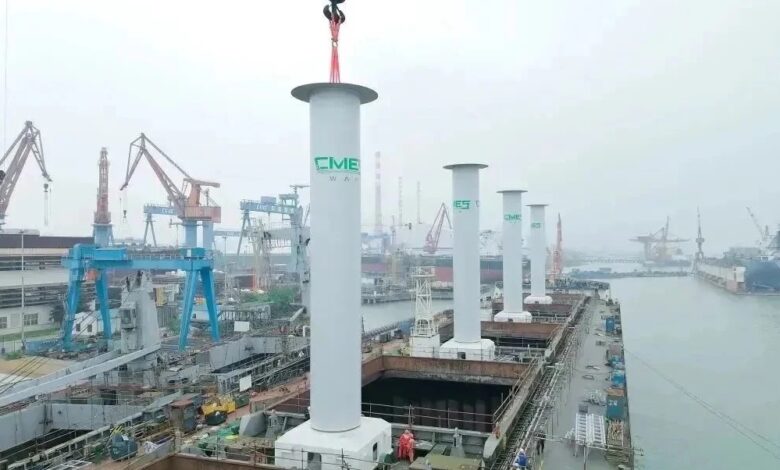China showcases its own rotor sails

China has showcased its first domestically produced rotor sails, installed on an 11-year-old bulk carrier.
CSSC Chengxi Shipbuilding installed four Flettner rotor style sails on the 45,000 dwt Chang Hang Sheng Hai, a ship which is owned by Minsheng Financial Leasing and operated by Ming Wah.
The sails, developed over the last three years, are 3 m wide and 24 m tall, with CSSC claiming the ship will achieve energy savings of more than 5%.
Rotor sails are gaining popularity. Currently Finland’s Norsepower and the UK’s Anemoi Marine Technologies lead the market for this type of propulsion, manufacturing spinning cylinders that use the Magnus effect to harness wind power to thrust a ship.
Kites, rotors, hard sails – shipowners seeking wind-assist technology have never had so many options as today.
The shipping industry started this year with 23 large vessels installed with wind propulsion systems and four others wind-ready bringing the total deadweight tonnage up to 1.4m, according to Gavin Allwright, secretary-general of wind propulsion promoters International Windship Association (IWSA).
With sail power rebooted, forecasts for the rest of this year total 24 new installations, bringing the combined total to well over 3m dwt across around 50 vessels, primarily bulkers and general cargo vessels.
“2023 – 2024 could be breakout years for planning and ordering wind-assisted propulsion systems on ships due to commercial and regulatory drivers,” Panos Koutsourakis, ABS director of global sustainability, told sister title Splash Extra in an in-depth wind propulsion feature earlier this year.
